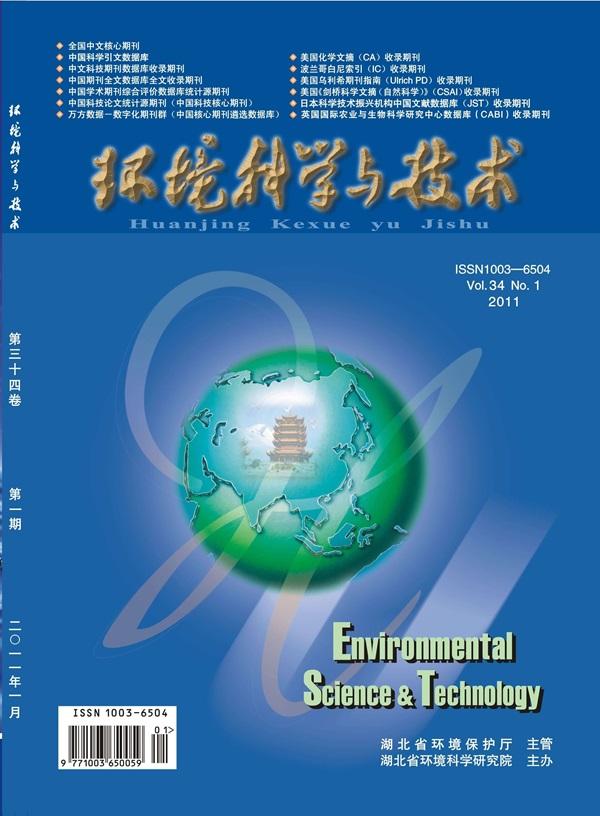Electrochemically Assisted Calcium Silicate Utilization for Phosphate Recovery
IF 11.3
1区 环境科学与生态学
Q1 ENGINEERING, ENVIRONMENTAL
引用次数: 0
Abstract
Electrochemical pH-swing systems have demonstrated significant potential across diverse applications, including chemical production, carbon capture, and water treatment. However, conventional systems predominantly depend on costly ion exchange membranes, which are often plagued by fouling and scaling challenges. Here, we introduce an ingenious electrochemically assisted calcium silicate (EACS) system capable of achieving a rapid pH swing from 8.5 to 10 within 1 h through the in situ utilization of H+ and OH– ions, eliminating the need for membranes. The EACS system incorporates a novel 3D-printed porous basket holder designed to house calcium silicate particles and a rod-shaped Ru–Ir anode. Under closed-circuit conditions, the packed calcium silicate reacts with H+ generated at the anode, releasing Ca2+ into bulk solution, while OH– produced at the cathode accumulates, resulting in an elevated bulk pH. This mechanism enables the EACS system to achieve exceptional phosphorus recovery efficiency (88.4%–96.6%) from various waste streams, with energy consumption as low as 24.4 kWh kg P–1. Long-term continuous flow experiments demonstrate that periodic replacement of depleted silicate minerals sustains system efficiency and stability. Furthermore, comparative analysis reveals that while carbonate and silicate minerals are functionally viable, silicate minerals exhibit superior performance in removal kinetics, product purity, and reduced carbon emissions. Notably, the effluent from the EACS system, enriched with Ca2+ and characterized by a high pH, exhibits potential for direct air carbon capture. The proposed EACS system offers a transformative approach to environmental remediation and industrial applications, leveraging the fundamental principle of pH-swing to open new avenues for sustainable solutions.

电化学辅助硅酸钙在磷酸盐回收中的应用
电化学ph变化系统在化学生产、碳捕获和水处理等多种应用中显示出巨大的潜力。然而,传统的系统主要依赖于昂贵的离子交换膜,这些膜经常受到污垢和结垢的困扰。在这里,我们介绍了一种巧妙的电化学辅助硅酸钙(EACS)系统,该系统能够通过原位利用h +和OH -离子,在1小时内实现pH从8.5到10的快速变化,从而消除了对膜的需求。EACS系统采用了一种新型的3d打印多孔筐支架,设计用于容纳硅酸钙颗粒和棒状Ru-Ir阳极。在闭环条件下,填充硅酸钙与阳极产生的H+反应,释放Ca2+到体溶液中,而阴极产生的OH -积累,导致体ph升高。这一机制使EACS系统能够从各种废物流中获得优异的磷回收效率(88.4%-96.6%),能耗低至24.4 kWh kg P-1。长期连续流动试验表明,定期更换枯竭的硅酸盐矿物维持了系统的效率和稳定性。此外,对比分析表明,虽然碳酸盐和硅酸盐矿物在功能上可行,但硅酸盐矿物在去除动力学、产品纯度和减少碳排放方面表现出更优越的性能。值得注意的是,EACS系统的废水富含Ca2+,其特点是pH值高,具有直接捕获空气碳的潜力。拟议的EACS系统为环境修复和工业应用提供了一种变革性的方法,利用ph值波动的基本原理为可持续解决方案开辟了新的途径。
本文章由计算机程序翻译,如有差异,请以英文原文为准。
求助全文
约1分钟内获得全文
求助全文
来源期刊

环境科学与技术
环境科学-工程:环境
CiteScore
17.50
自引率
9.60%
发文量
12359
审稿时长
2.8 months
期刊介绍:
Environmental Science & Technology (ES&T) is a co-sponsored academic and technical magazine by the Hubei Provincial Environmental Protection Bureau and the Hubei Provincial Academy of Environmental Sciences.
Environmental Science & Technology (ES&T) holds the status of Chinese core journals, scientific papers source journals of China, Chinese Science Citation Database source journals, and Chinese Academic Journal Comprehensive Evaluation Database source journals. This publication focuses on the academic field of environmental protection, featuring articles related to environmental protection and technical advancements.
 求助内容:
求助内容: 应助结果提醒方式:
应助结果提醒方式:


